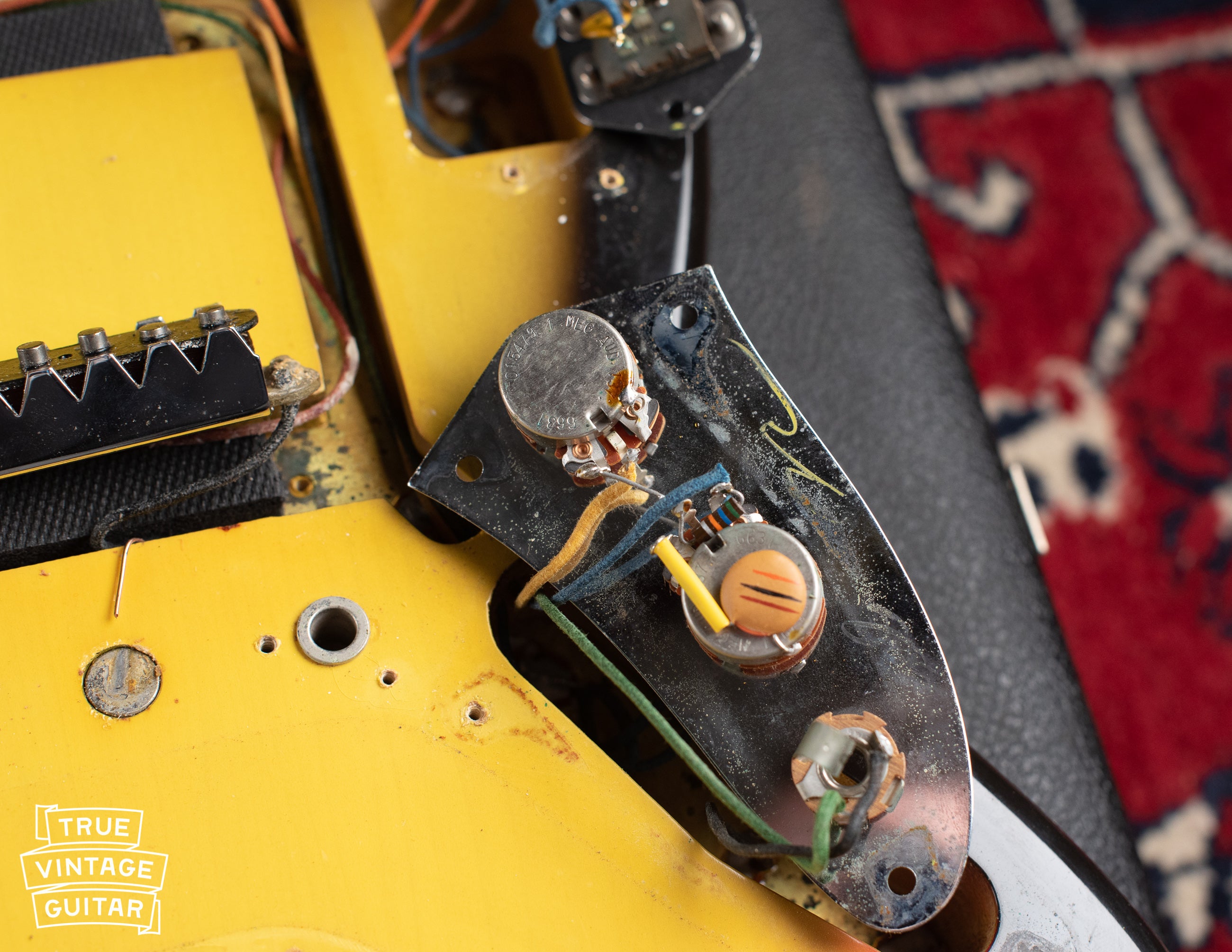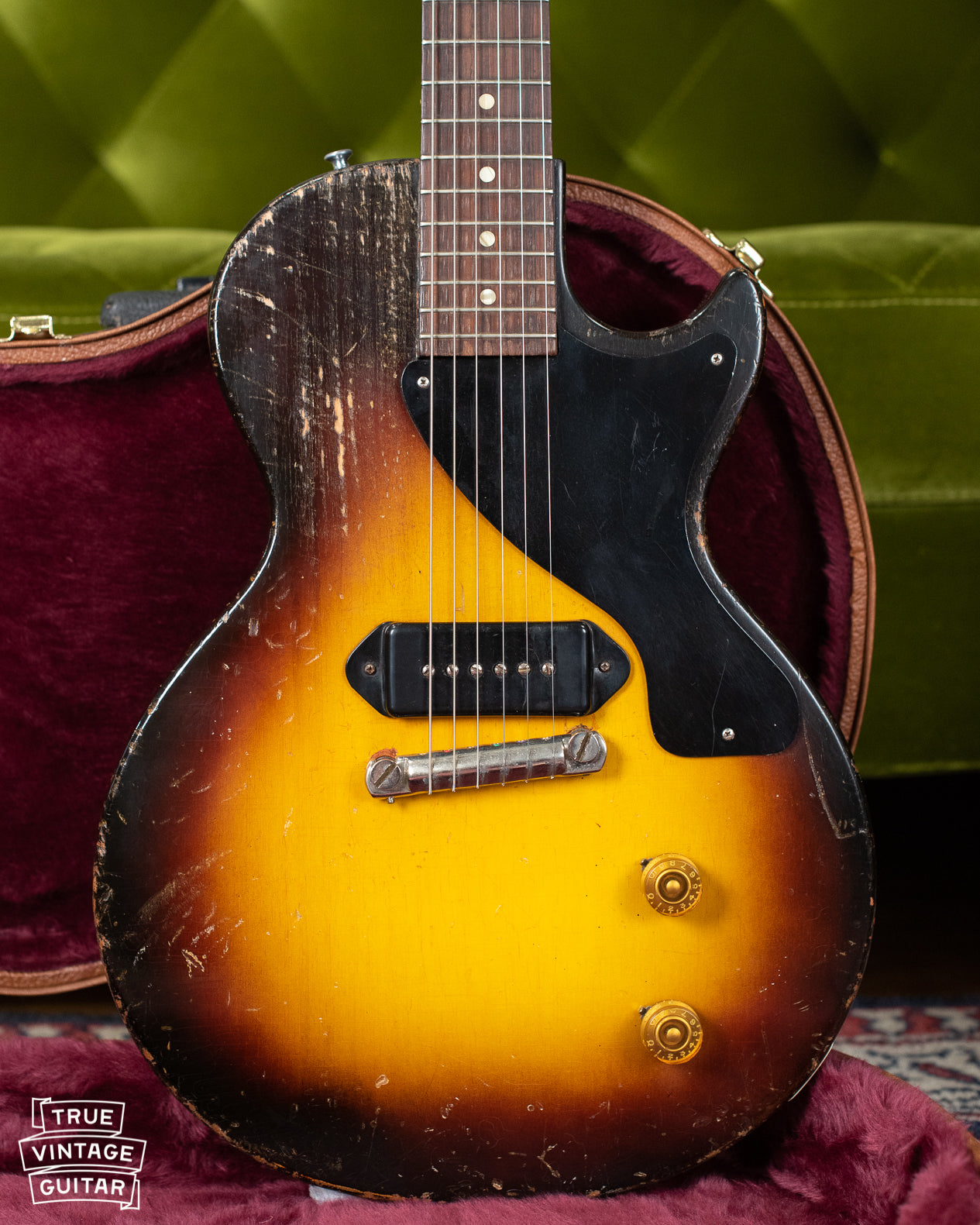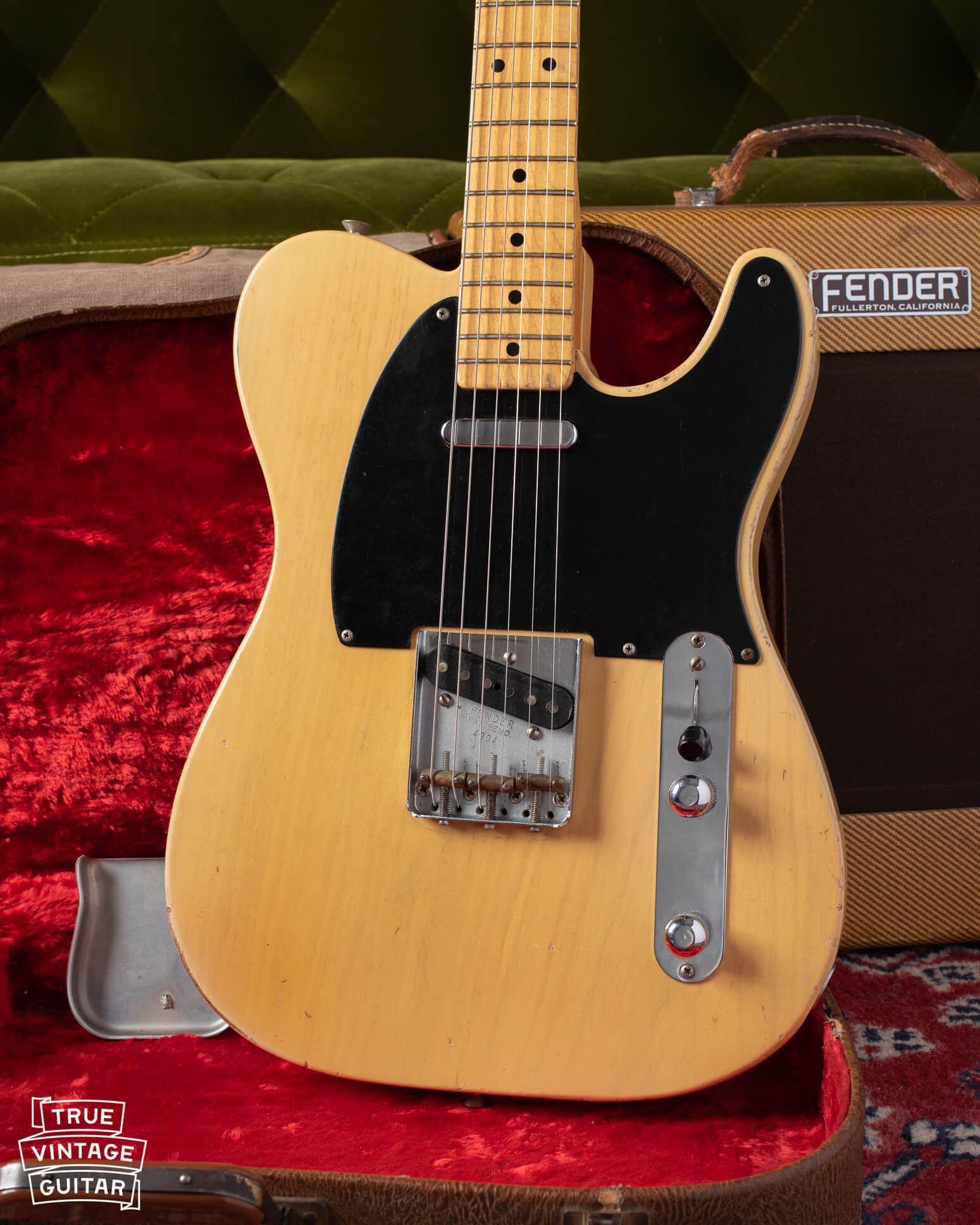This vintage 1966 Fender Jaguar has just come in from the basement of the original owner. It is in original, as found condition and shows no signs of modification or repair. It's important to have detailed pictures inside and out of vintage Fender guitars to verify their authenticity. Here are four important parts to check on a vintage Fender electric guitar. Would you like help inspecting a vintage Fender electric guitar for authenticity? Reach out to me here for help authenticating a vintage Fender guitar: https://truevintageguitar.com/pages/sell-vintage-fender-guitar. Please enjoy all the important pictures underneath the pickguard of this clean vintage 1966 Fender Jaguar!
Part 1: check the body finish underneath the pickguard. Here I'm looking for factory refinish marks and the finish on the edges of the body cavity. The space between the two pickups is where the Fender factory would engrave a number and some letters to help keep track of the body and the neck during the refinish process. I don't see any such marks here so that's good. I also see sharp edges of the body cavity which is what I'm looking for to help confirm an original finish.
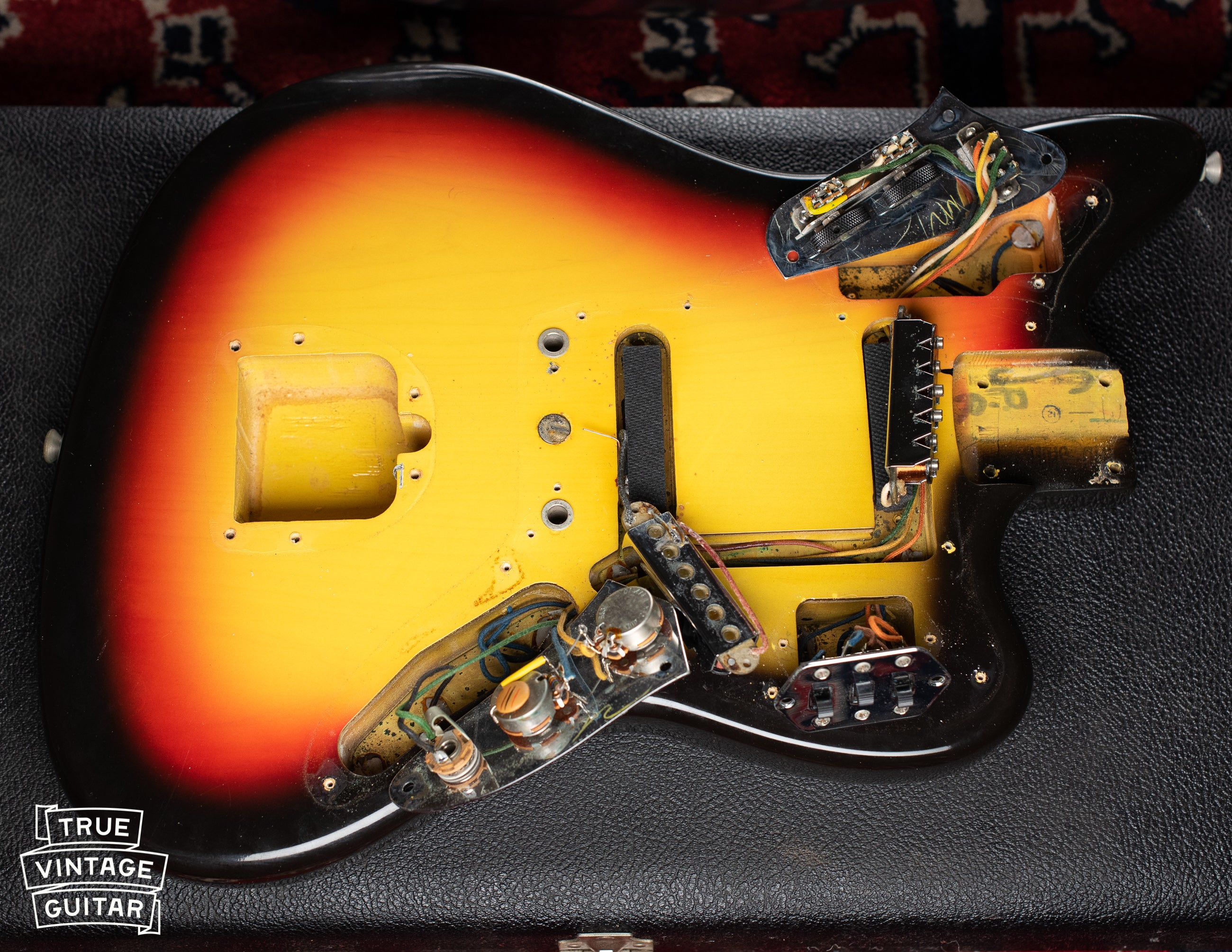
Part 2: The neck pocket. Fender started using a flattened metal pipe screwed to the body in the neck pocket in late '62/early '63 which leaves a particular mark. The neck pocket on this 1966 Fender Jaguar shows a textbook example of what the paint stick mark should look like during this time period. If this area was completely covered with paint then I would suspect a refin.
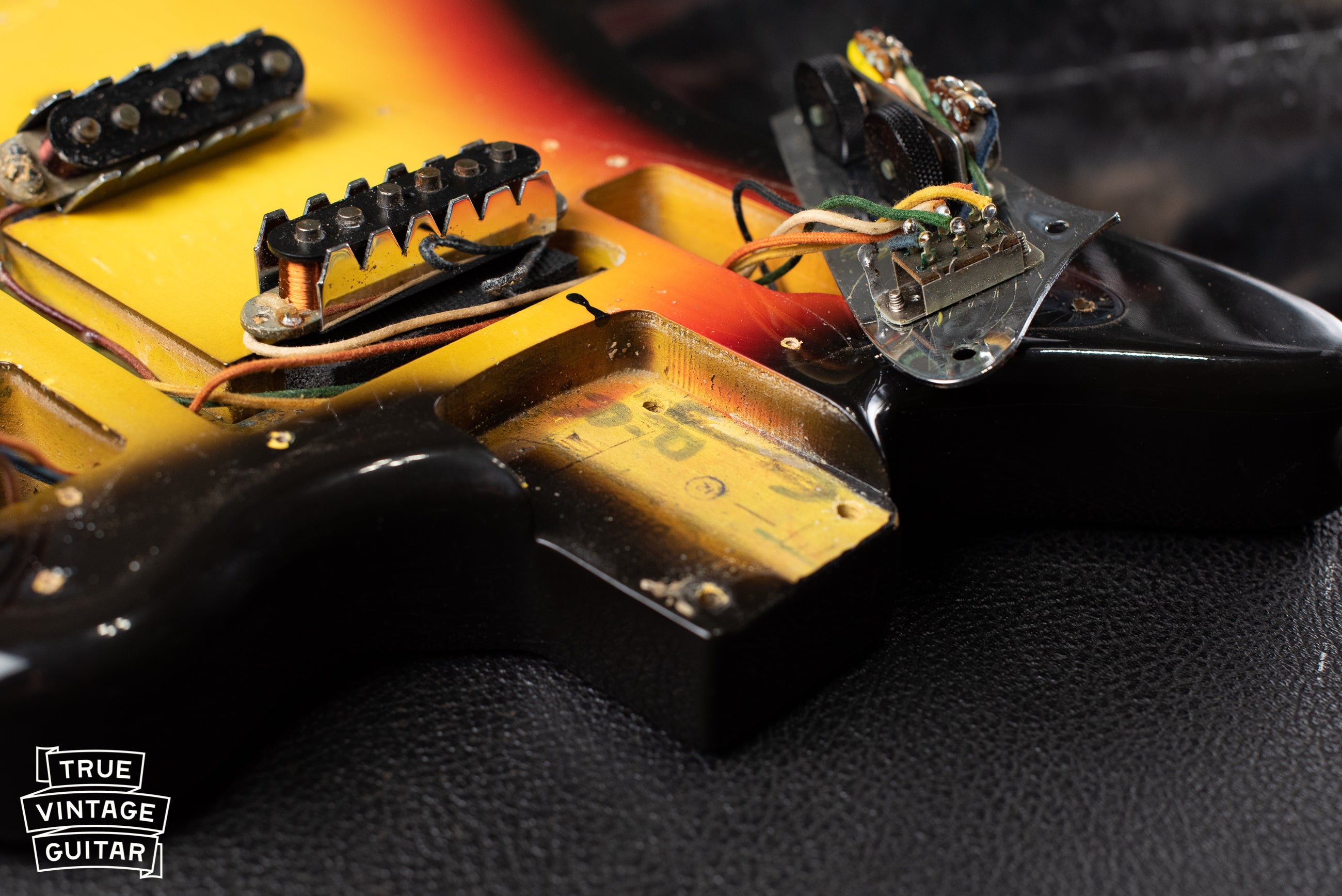
Part 3: the date stamp on the neck heel. Neck heel stamps were applied early on in the manufacturing process so the date doesn't usually indicate the time period the entire guitar was assembled. The stamp here ("1SEP65B") indicates: 1 = model number code (Jaguar), SEP = September, 65 = 1965, B = standard nut width (1 5/8").

Part 4: potentiometer date codes. The potentiometers are variable resistors that control the volume and tone output. They usually have a date code which indicates the week and the year they were manufactured. Electronics were installed very late in the manufacturing process so they are usually a better way to date the guitar. Here, we can see the code "137 6631". "137" is the manufacturer code indicating CTS or Chicago Telephone Supply. "6631" indicates the last two digits of the year and the two digits indicating the week of the year. This potentiometer was manufactured during the 31st week of 1966. This guitar likely left the factory in late 1966.
